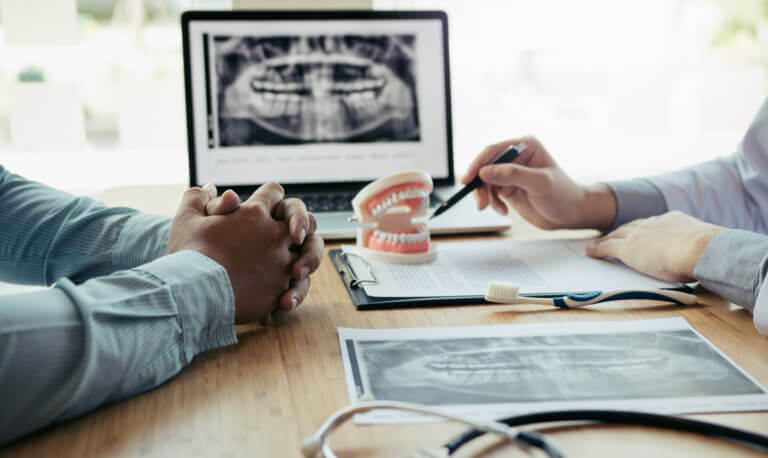A Good Dental Diagnosis and Good Dentistry Go Hand in Hand
While we may easily overlook this obvious point, making or getting an improper or wrong dental diagnosis can be both painful and costly.
As the patient yourself, you may think you know what is or isn’t wrong. When it comes to our teeth, sometimes what we feel may be misleading.
I’d like to share a recent case how making the proper diagnosis helped me give my patient the correct treatment for his condition. This despite what he thought to start.
“I Don’t Think It’s My Tooth.”
The beginning of that statement discussed discomfort in the lower-left area of this patient’s mouth. The pain came from this area, but it didn’t feel like a toothache.
Often, the body in general and the mouth, in particular, will fool us. We feel something in one area, and in reality, it is coming from a different part of the body. The head and neck area have so many nerves present that it is easy to think that one area is a problem. We later find out that we were incorrect in the source of the issue once we seek medical help.
One goal of a healthcare provider is to sort through all the information and tests and find the cause of the problem. In short, we diagnose a patient and recommend treatment to help that person.
A Good Dental Diagnosis is Crucial
In dentistry, the diagnostic component is crucial to effective and proper treatment.
As dentists, we are doers. Many people do not give enough importance to the job we do as diagnosticians.
As any good dentist will tell you, our brains work overtime to develop the correct diagnosis.
Those patients that have dental insurance know that the insurance company assigns a minimal about of reimbursement for exams and diagnosis.
Unfortunately, this critical component of treatment is not given the importance that it is due.
Interpreting the Symptoms and The Signs
The Symptoms
My patient had a radiating toothache. It spread from his tooth up into his jaw, and the gum felt sore. All of these complaints throw up a red flag.
A tooth, like the one just described, often ends up requiring removal, or possibly it needs a root canal treatment.
The comments made by the patient are called “symptoms.” I ask the patient to describe why they came into the office and what do they expect me to do.
The Signs
The answer to these and other questions give me the patient’s symptoms. I then observe and look at the patient and area of concern. I may take a photograph or possibly an x-ray. All the observations that I make we call “signs.”
Making a Proper Dental Diagnosis
I sort through the signs and symptoms and come to a diagnostic conclusion. Often, I see the signs and symptoms that conflict with each other. More questions and investigation lead me to the correct diagnosis.
Our patient in question had a toothache but didn’t have a toothache. I listened carefully and then did an exam in the mouth.
The source of the pain was a lot of food packed into the gum area. The spot was swollen and irritated as a result of the food collecting in this area and not moving out.
I found a lot of food jammed under the gum. The accumulation of food like this is unusual. There were no other areas of his mouth that looked like this.
I looked a little closer and found a tooth-colored filling on the tooth. The back of the filling showed a small fracture.
This location of the break was right next to the tooth behind it. Whenever he chewed food was forced into this space and would not leave. It just sat there.
A Lack of ‘Contact’ is Problematic
Teeth are meant to touch their neighbor. Small spaces between the teeth are a source of the problem. In dentistry, we call this “contact.” Every tooth has to contact and touch the tooth on either side. The lack of this touching leads to severe problems and infection.
Once I fix the break, the gum problem goes away. The treatment for that is quite simple.
In Summary
Figuring out your source of a dental problem can be quite a challenge. Receiving the proper diagnosis and professional care is essential in correcting issues and restoring health.
If this sounds like something you need, then please call us at 440.951.7856, and set aside some time for us to meet. I look forward to our visit.
Jeffrey Gross, DDS, FAGD is an Ohio licensed general dentist and is on the staff of Case Western Reserve School of Dental Medicine in the Department of Comprehensive Care.

